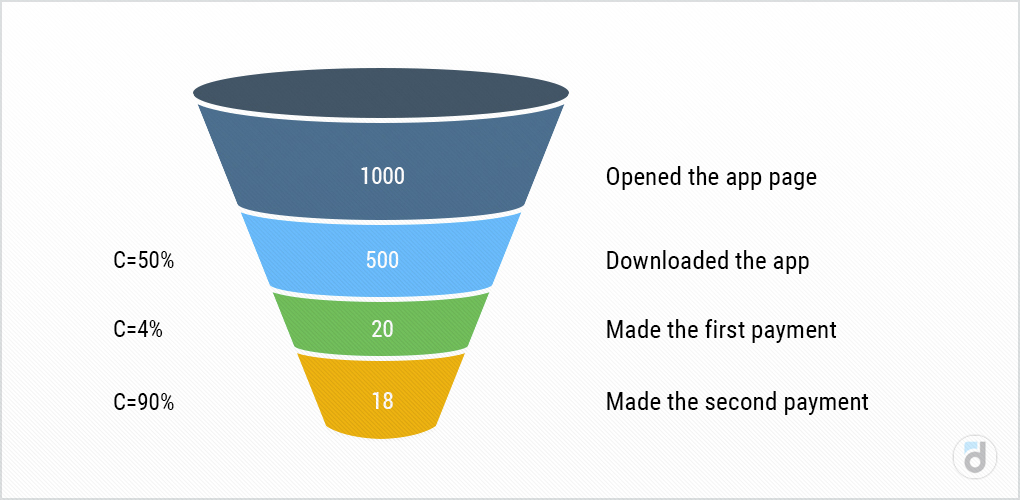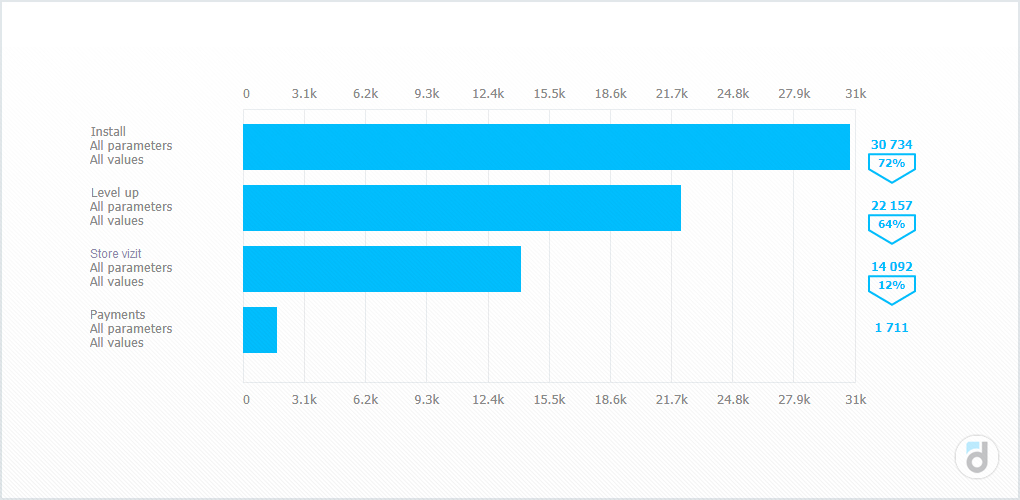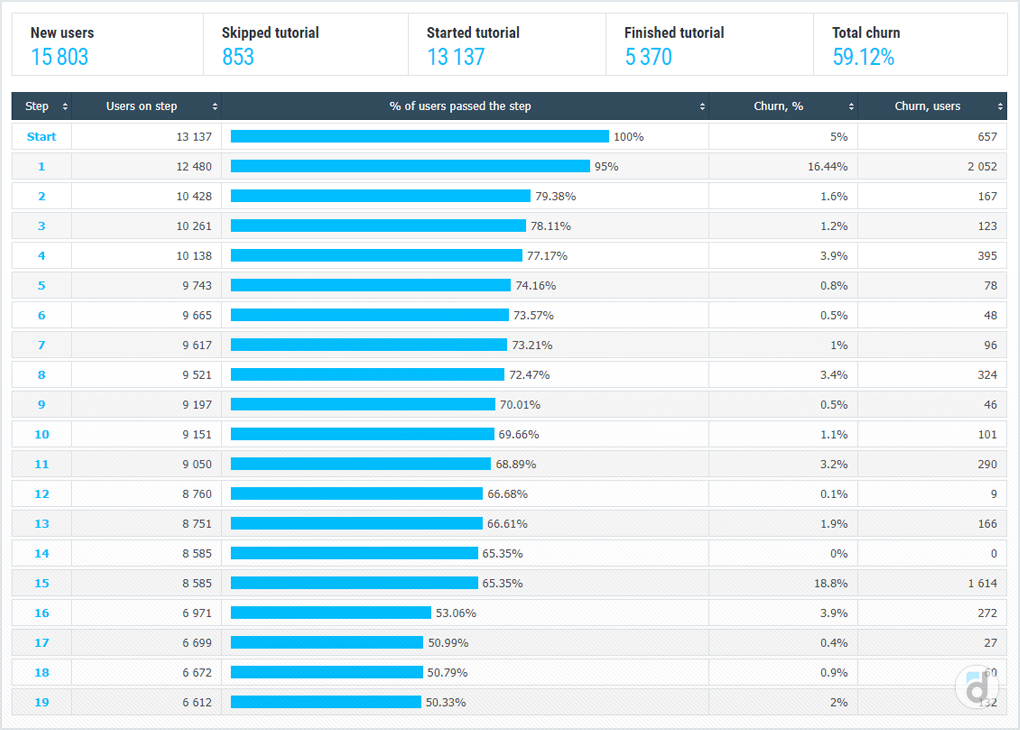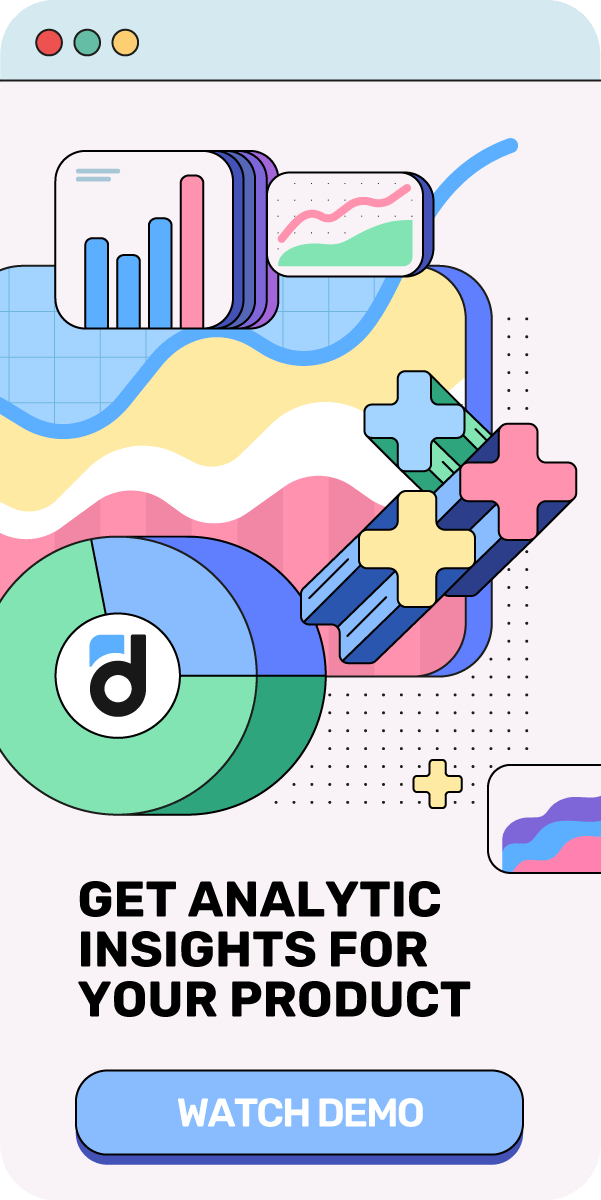A new user who opens our website or application isn’t valuable for us as they are, but they become valuable after they perform a desired action. We may want them to register, place an order, make a payment or do something that will bring us some benefit immediately or after some time.
But in real life, people do not behave the way we want them to. Even when they start moving in the right direction, they are still some steps away from it and they often don’t make it all the way regardless of the length of this way.
In order to analyze this path, find the exact steps where these people lose their way, and then try to somehow keep them, we can imagine it in the form of a funnel (“conversion funnel”).
Read more: 25 Things that Analysts Hate
A conversion funnel is a complete sequence of user actions that they must perform in order to move from, let’s say, opening a website/installing an application to the goal that you need. Let's say, we have an application, and we want to trace the user's path to the second payment. Then the conversion funnel may look like this:

The funnel got its name due to the fact that it is built based on the number of unique users who have committed an action. On the first step we have the biggest number of users, then we lose some of them and a fewer number moves to the second step, and then even fewer move to the third, and so on. It is unlikely that absolutely all users, for example, from the second stage, will move to the third.
Read more: Main Metrics. Churn Rate
After you write down all the steps, count the number of people who have moved from one stage to the next, you can clearly see the conversion between the steps (the ratio of the number of users in step N to the number of users in the step N-1). You can analyze this conversion, determine where you lose the most users, and try to alter it somehow.
The example above shows that users who download the application are unwilling to make the first payment. Only 4% of them start paying (20 people out of 500). Knowing this, you can somehow motivate them to perform the target action. After making changes in the product, you will need to build the conversion funnel again and see their impact on the bottleneck.
Read more: Main Metrics. Retention
However, as a result of experiments, your conversion may deteriorate at some other stage, so it is very important to calculate the conversion from the first step to the last. For example, you could have acquired a lot of traffic, but the conversion from the first step to the last, may stay the same:
|
Option 1 |
Option 2 |
|||
|
N of users |
Conversion |
N of users |
Conversion |
|
|
Step 1 |
1000 |
1000 |
||
|
Step 2 |
500 |
50.0% |
500 |
50.0% |
|
Step 3 |
20 |
4.0% |
60 |
12.0% |
|
Step 4 |
18 |
90.0% |
18 |
30.0% |
|
General conversion |
1.8% |
1.8% |
||
Therefore, when you make improvements in the product, you should monitor the change in conversion at all steps and not just the one for which we made these improvements.
In addition, when analyzing funnels, you can take different segments of the audience and then compare them. For example, you can build two funnels with users from two different countries and see how they go the same way to the target action.
In the devtodev analytics service, for example, you can build conversion funnels for a variety of processes - from making a payment:

to the completing the tutorial of a game or an application:

You can build funnels to analyze the effectiveness of any processes that affect the project’s monetization and users’ involvement. For example, you can compare different traffic sources, the effectiveness of email newsletters, user satisfaction of a particular level of the game, and even compare similar applications. All this you can do in the devtodev service.
Join our free online course on Game Analytics: From Basics to Advanced Strategies
A funnel is an ideal tool for analyzing the user's path and identifying bottlenecks in your product. Such an analysis allows you to make the necessary changes, increase retention and improve financial performance.
Conversion funnel report at the Devtodev analytics platform:











































































































































































































































































































































